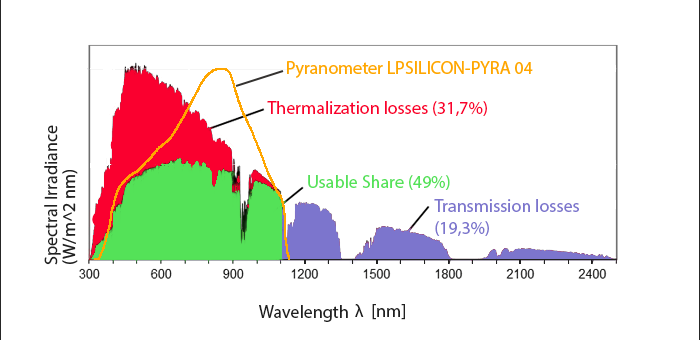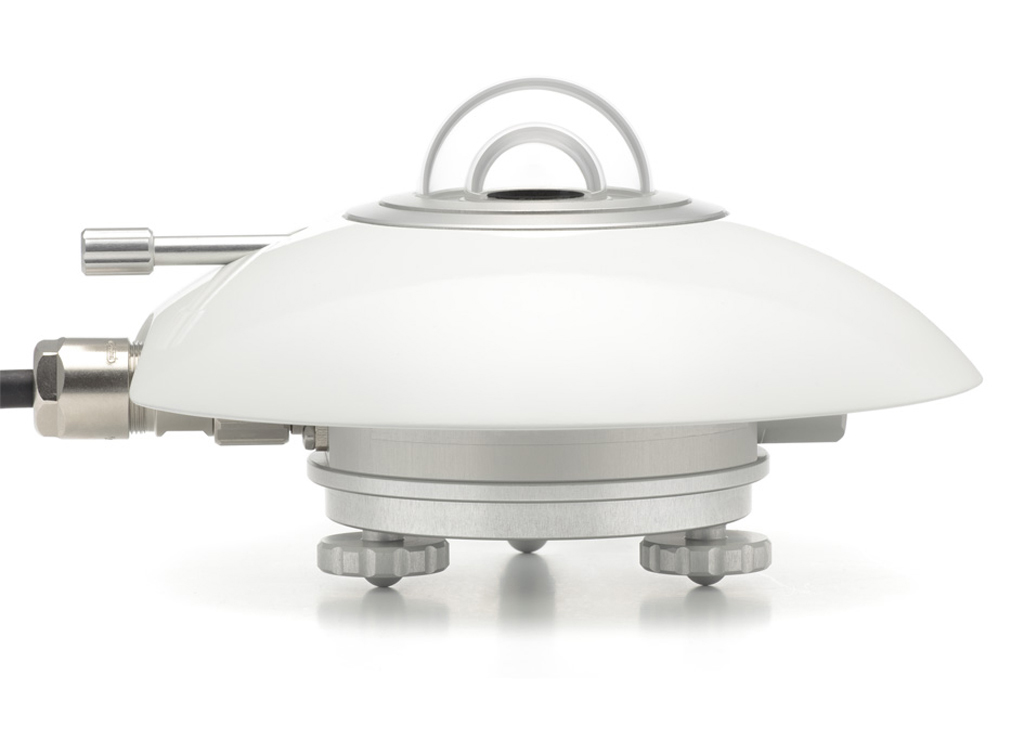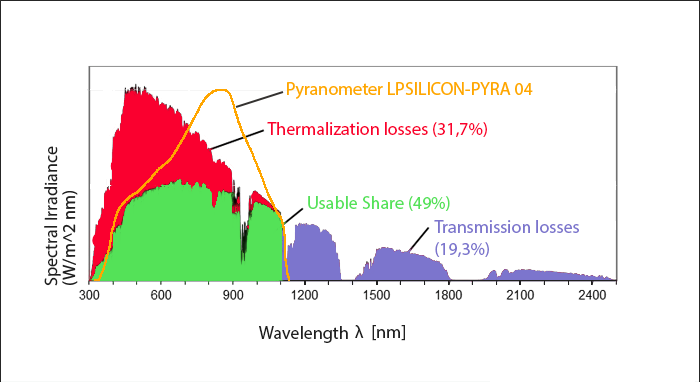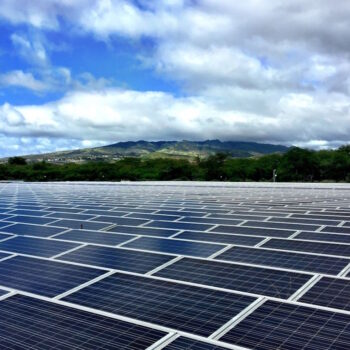
Solar Irradiance Measurement for Photovoltaic Systems: Pyranometers, Reference Cells, and Reference Modules
- Posted by Andre
- On 17. October 2023
- 0 Comments
Accurate measurement of solar irradiance is paramount for the optimal performance and efficiency of photovoltaic (PV) systems. It enables engineers and operators to design, monitor, and maintain these systems effectively. In this discussion, we’ll explore the reasons for why we need a reliable solar irradiance measurement and three crucial instruments used in solar irradiance measurement for PV systems: pyranometers, reference cells, and reference modules.
Table of Contents
Why is it important to have a reliable solar irradiance measurement method?
There are multiple reasons for having precise solar irradiance measurement. One example would be for determining the size of a solar energy system (e.g., PV panels, solar thermal collectors). This requires accurate data on solar irradiance to ensure that the system is appropriately sized to meet the desired energy production goals.
Another important example would be for maintenance of a PV plant. IV-curve tracing requires realtime irradiance data to calculate the expected values and therefore show faults in the plant. Solar irradiance data also helps estimate the amount of energy a solar system is expected to produce over a specific period. This information is vital for financial modeling, return on investment (ROI) calculations, and project feasibility assessments.
For grid-connected systems, knowing solar irradiance levels aids in the stable integration of solar power into the electrical grid. Grid operators can better anticipate and manage fluctuations in solar power output.
Pyranometers

Pyranometers are instruments specifically designed to measure the total solar irradiance (global horizontal irradiance) incident on a surface. They are vital tools for PV system assessment and performance monitoring.
Advantages:
- Accuracy: Pyranometers offer high accuracy in measuring total solar irradiance across a wide spectral range.
- Low Maintenance: They are generally low-maintenance instruments, capable of providing reliable data over extended periods.
- Cost-Effectiveness: Compared to other specialized instruments, pyranometers are cost-effective and widely used in the solar energy industry.
Disadvantages:
- Directional Sensitivity: Pyranometers are sensitive to the angle of incidence of sunlight, potentially leading to underestimation of irradiance under non-normal incidence conditions.
- Spectral Dependency: Some pyranometers may have a spectral response that doesn’t perfectly align with the solar spectrum, resulting in small measurement errors.
Reference Cells
Reference cells serve as the gold standard for calibrating other photovoltaic devices. They provide a traceable measurement to international standards and play a crucial role in ensuring the accuracy of PV system performance data.
Advantages:
- Traceability: Reference cells offer traceable measurements to international standards, establishing a clear calibration hierarchy.
- High Accuracy: These cells are meticulously calibrated and provide extremely accurate measurements of solar irradiance.
- Stability: Well-maintained reference cells can maintain their accuracy over long periods.
Disadvantages:
- Ageing: The reference cell can also age. The ageing effect has an influence on the measurement results and can falsify them.
- Temperature dependence: Reference cells can deliver poor results with temperature fluctuations, as they are very temperature-dependent.
Reference Modules
Reference modules are essentially PV modules that are characterized to provide accurate solar irradiance measurements. They mimic the behavior of standard PV modules under known conditions and are used for calibration and validation purposes.
Advantages:
- Real-World Simulation: Reference modules provide a more realistic representation of PV system performance compared to isolated reference cells.
- Application Specific: They can be tailored to match the characteristics of the specific PV modules used in a project.
- Calibration Verification: Using reference modules allows for periodic verification of the accuracy of the PV system’s measurements.
Disadvantages:
- Complexity: Setting up and maintaining a reference module can be more complex than using a reference cell, and may require more careful attention to environmental conditions.
Solar Irradiance Measurement for IV-curve Tracing
We at NEO Messtechnik use the “LPSILICON-PYRA 04” for the IV curve measurement. As can be seen in the image below, this pyranometer covers most of the usable share of solar radiation. Transmission losses and thermalisation are considered as energy losses. In the case of transmission losses, the energy of the incident photon is too low to overcome the band gap of the silicium panel. With thermalisation, on the other hand, the energy of the photon is too high, so that part of it is lost as heat.

In conclusion, each instrument—pyranometers, reference cells, and reference modules—plays a vital role in the accurate measurement of solar irradiance for PV systems. Pyranometers offer cost-effective and practical total irradiance measurements. Reference cells provide traceable and highly accurate calibration standards. Reference modules, while more complex to set up, offer a more realistic representation of PV system performance. Understanding the strengths and limitations of these tools allows for the selection of the most appropriate method for a given application, ensuring the success and efficiency of PV installations.
Wrapping up
Where can I get more information?




0 Comments